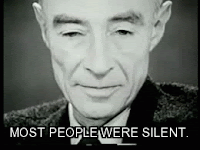The word art derives from the Latin "ars" (stem art-), which, although literally defined means "skill method" or "technique", also conveys a connotation of beauty. During the Middle Ages the word artist already existed in some countries such as Italy, but the meaning was something resembling craftsman, while the word artisan was still unknown. An artist was someone able to do a work better than others, so the skilled excellency was underlined, rather than the activity field. In this period, some "artisanal" products (such as textiles) were much more precious and expensive than paintings or sculptures. The first division into major and minor arts dates back at least to the works of Leon Battista Alberti (1404–1472): De re aedificatoria, De statua, De pictura, which focused on the importance of the intellectual skills of the artist rather than the manual skills (even if in other forms of art there was a project behind). With the academies in Europe (second half of 16th century) the gap between fine and applied arts was definitely set. Many contemporary definitions of "artist" and "art" are highly contingent on culture, resisting aesthetic prescription, in much the same way that the features constituting beauty and the beautiful cannot be standardized easily without moving into kitsch.
















































